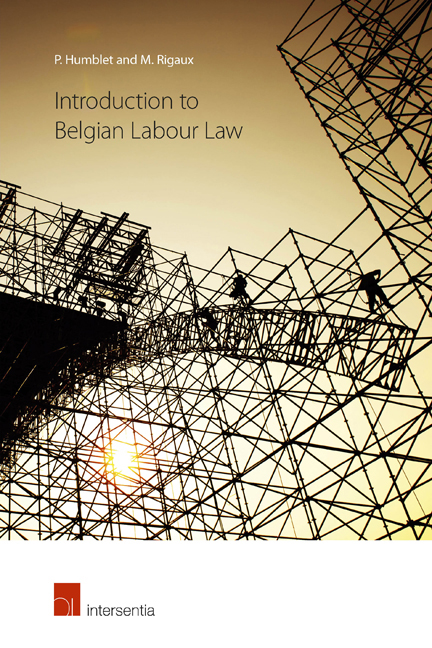Book contents
- Frontmatter
- Preface
- Contents
- List of Abbreviations
- PART I EMPLOYMENT LAW
- I THE CONTRACT OF EMPLOYMENT
- II CONCLUDING THE CONTRACT
- III EMPLOYMENT
- IV TERMINATION OF EMPLOYMENT
- V SPECIAL AND DEVIATING TYPES OF EMPLOYMENT CONTRACTS
- PART II INDUSTRIAL RELATIONS LAW
- I FREEDOM OF ASSOCIATION
- II TRADE UNIONS AND EMPLOYERS’ ASSOCIATIONS
- Chapter 1 Trade Unions
- Chapter 2 Employers’ Associations
- III INSTRUMENTS FOR SOCIAL DIALOGUE
- IV FUNDS FOR SOCIAL SECURITY
- V INDUSTRIAL ACTION
- In Cauda
- General Bibliography
- E-addresses
Chapter 1 - Trade Unions
from II - TRADE UNIONS AND EMPLOYERS’ ASSOCIATIONS
Published online by Cambridge University Press: 13 December 2017
- Frontmatter
- Preface
- Contents
- List of Abbreviations
- PART I EMPLOYMENT LAW
- I THE CONTRACT OF EMPLOYMENT
- II CONCLUDING THE CONTRACT
- III EMPLOYMENT
- IV TERMINATION OF EMPLOYMENT
- V SPECIAL AND DEVIATING TYPES OF EMPLOYMENT CONTRACTS
- PART II INDUSTRIAL RELATIONS LAW
- I FREEDOM OF ASSOCIATION
- II TRADE UNIONS AND EMPLOYERS’ ASSOCIATIONS
- Chapter 1 Trade Unions
- Chapter 2 Employers’ Associations
- III INSTRUMENTS FOR SOCIAL DIALOGUE
- IV FUNDS FOR SOCIAL SECURITY
- V INDUSTRIAL ACTION
- In Cauda
- General Bibliography
- E-addresses
Summary
SECTION 1. THE LEGAL POSITION OF REPRESENTATIVE UNIONS
FUNCTIONAL LEGAL PERSONALITY
Unions can acquire legal personality provided their articles of association comply with the Law of 31 March 1889 on professional associations (hereafter referred to as the Professional Associations Act) or the Law of 27 June 1921 on non profit organisations (hereafter referred to as the Non-profit Organisations Act). For various reasons they have not used this possibility to date.
After the Second World War, the public authorities realised that unions had to be formally involved in the socio-economic decision-making process and granted them certain powers, i.e. functional legal personality. This covers a wide range of union powers. The most important is undoubtedly the competence to conclude contracts and act as agents.
In the framework of the Law on Collective Labour Agreements of 5 December 1968 (hereafter the Collective Labour Agreements Act), representative unions were awarded, inter alia, the competence to draw up legally binding collective labour agreements.
REPRESENTATIVE WORKERS’ ORGANISATIONS
The concept ‘most representative workers’ organisation’ was first used in the framework of the Constitution of the International Labour Organization and adopted in various Western European countries in the period between the two World Wars. It became commonly used in Belgium after 1945, when the legislature proceeded to structure industrial relations in consultation with the social partners.
In order to facilitate social dialogue, the public authorities decided to negotiate only with representative workers’ organisations. To qualify as representative, they had to meet a number of conditions. Article 3 of the Collective Labour Agreements Act, for instance, provides that multi-industry organisations set up at national level and represented in the National Economic Council and the National Labour Council are representative. Other laws contain similar provisions.
As a result, only three workers’ organisations are involved in social consultations at all levels, i.e. the Federation of Liberal Trade Unions, the Confederation of Christian Trade Unions, the Belgian General Federation of Labour and the occupational associations affiliated to the latter two.
- Type
- Chapter
- Information
- Introduction to Belgian Labour Law , pp. 181 - 184Publisher: IntersentiaPrint publication year: 2016

